








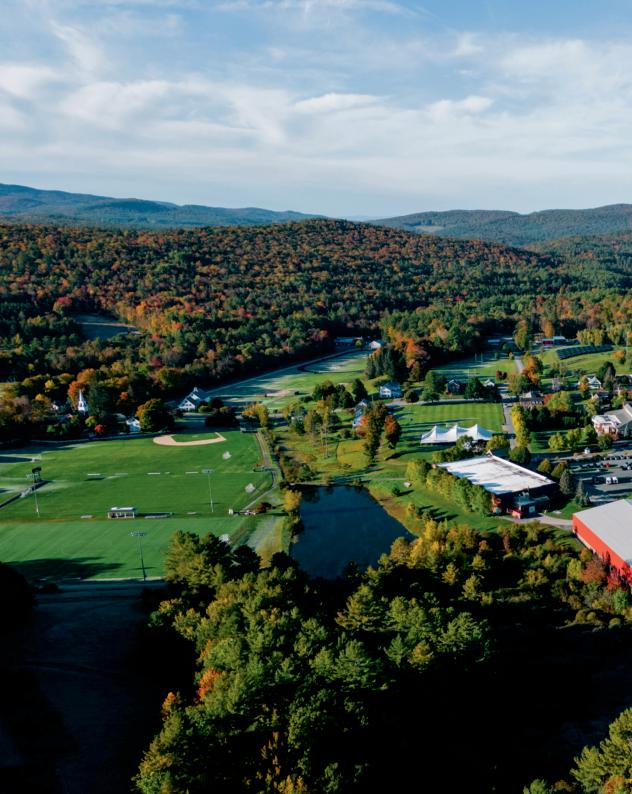
Our mission is to create a deep sense of belonging for every member of our community. Through intentionally designed experiences and challenges, our students develop the knowledge, voice, and character to live with purpose and integrity.


Kimball Union draws from 200 years of experience to provide a 21st century curriculum that meets students where they are academically and prepares them for achievement in college and life.
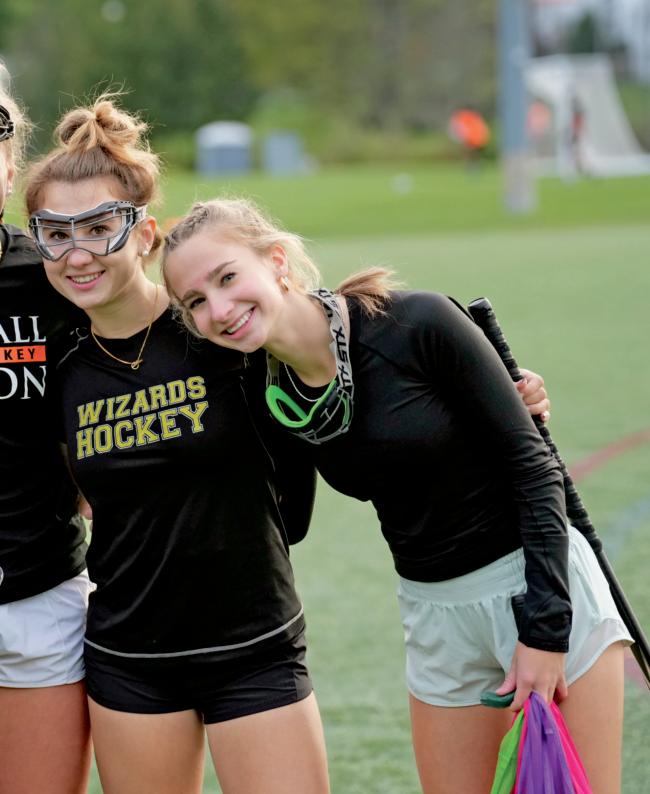
Day Students
340
GRADES 9 THROUGH 12 AND POST GRADUATE

24 countries represented 1,300-acre campus
10 miles to Lebanon Airport
12 miles to Dartmouth College
40,000 square-foot indoor, heated turf field
13 miles of mountain bike and Nordic ski trails
6:1 student-faculty ratio
10 students in an average class
130 unique course offerings
20 AP courses
78% of full-time faculty with an advanced degrees
99 students accepted at 197 colleges and universities in 2023

21 interscholastic sports

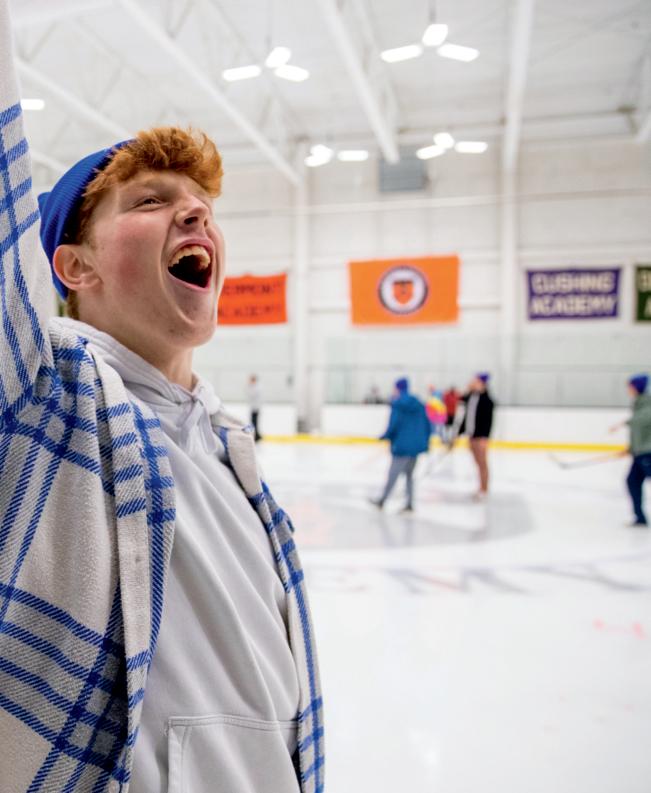

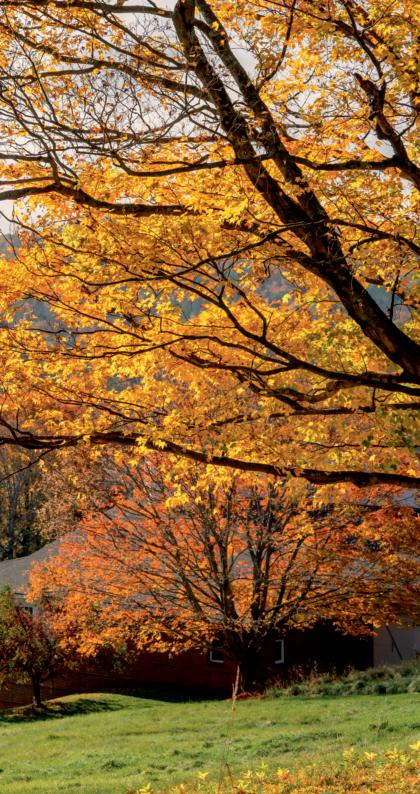

I
encourage you take some time to explore the stories that are woven through these pages. I believe you’ll discover a shared culture that exists for every member of our community. It is one of belonging. In images, you will see smiles, camaraderie, bold ventures, confident performances, and a grounded sense of place. Here on our campus, you feel it in the way our people build meaningful relationships and create a safe and highly engaging daily life and connection. It’s a culture we’ve nurtured for more than 200 years.
As an educator and parent, I know that choosing how, where, and with whom to spend your high school years is one of the most profound decisions you can make. In exchange, we will make a genuine investment in knowing, affirming, and respecting the value you will bring to our community.
We offer a richly designed environment of intellectual growth and exploration, but your educational path will be yours to define. Our role is to design intentional experiences and challenges that allow you to lose yourself in the intellectual pursuits, new ideas, and discussions that will help you write your own narrative. Our goal is to help you find learning both rich and rewarding so that you can develop the knowledge, voice, and character to find purpose in your life and make impact in the world.
I encourage you to come see Kimball Union for yourself. Meet our warm and welcoming faculty, our supportive coaches, and a community of students that can’t singularly be defined. They are here to welcome you, ignite your curiosity, and redefine what high school means for you.
I look forward to seeing you on The Hilltop!
TYLER LEWIS Head of School
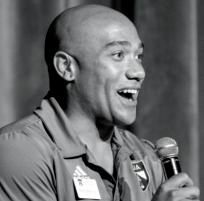

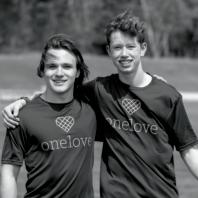
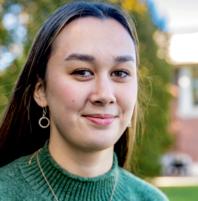

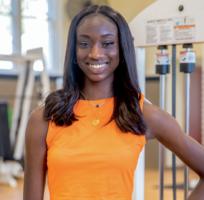
“There is an amazing feeling of community here where people feel so supported.”


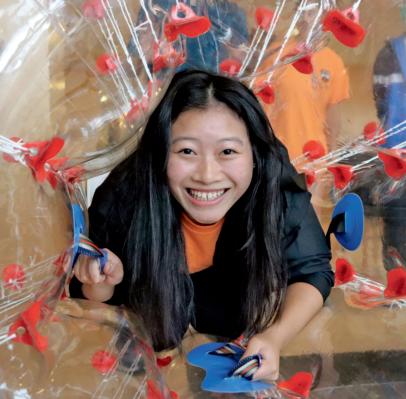
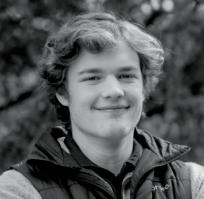


Building the Foundation for a Happy, Healthy Life
At KUA, learning happens everywhere, which means it doesn’t stop when classes end. Our program is designed to enable each student to achieve academic success through personal growth. Campus life offers you a family that supports, accepts, and helps you realize your full potential. It’s also a whole lot of fun.


KUA has a variety of residences for boarders to choose from, and students have a voice in where they’d like to live. This fosters the development of relationships within and across classes and gives every student the chance to thrive in the nurturing environment of multiaged supporters.
Each dorm is guided by a dedicated faculty member, or house head, who creates a healthy environment where students can find friendships, connections, and space in different ways. Each house head has their own approach to creating a “home away from home” that speaks to the individuality of the residents. For some, weekend baking and crafts are a favorite activity, while other dorms enjoy grill nights and Sunday afternoon football games. Dorm families eat together, study together, tackle problems together, and find space away from each other when necessary, just like a family. Typically, dorm meetings are held on Tuesday nights as time for discussion and general housekeeping, but also for community time and celebration. Student proctors help create a sense of culture and maintain respect within the dorms.
Day students are fully engaged members of the KUA community and are often described as “boarders who sleep at home.”
There’s no way to distinguish between our boarding and day students until the day is done. Our day student community —about 75 students—is fully invested in the KUA experience, participating in all academic, athletic, extracurricular, and weekend activities. They hold leadership positions and help shape the life of the Academy and the community and join their friends for meals in Doe Dining Commons.

You will be assigned an advisor from the start of your time at KUA through college matriculation. This will be a trusted adult who is there to guide you and ensure that you get the support you need to find success and personal growth.
Nine by Design intentionally meets ninth-grade students at one of the most pivotal points in their educational and developmental journey. Grounded in our educational philosophy, KUA Design, we support students through their transition to high school in the areas of learning, relationships, individuality, and wellbeing.
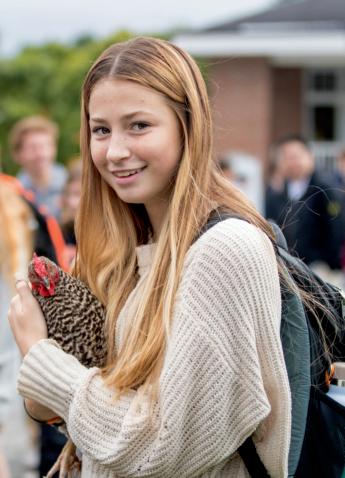
Each year students are engaged in specific programming that promotes academic, social, and personal growth on topics such as leadership, ethics, and the transition to college.
The College Advising team works with students and parents in all grades through college matriculation to educate, guide, support, and advise students as they navigate the process of self-assessment, research, application, and college choice.
Tell us about your role at KUA.
I see my role as two different yet connected parts. One part is to focus on overall community wellness in a proactive way. The other is providing counseling services on a day-to-day basis. I meet with students and parents and work with outside support systems. If students need a higher level of care, I’ll provide case management with their providers. I also coordinate with dorm parents, advisors, and coaches when a student needs assistance. We’ve also hired an additional school counselor to ensure that all students feel well supported throughout their KUA journey.
How do you proactively work on mental health?
I work closely with the Student Life Office to map out the year and determine the areas where we need more awareness of topics critical to our student community. Last year we had a strong focus on the ninth grade and offered well-being basics before kids even set foot on campus. In addition to offering an intro to mental health and common diagnoses, students will learn about topics like coping skills, how and where to ask for help, and how to help friends. This year, the school is working on a unified theme of wellbeing, which is a pillar of KUA Design. We’re going to be working closely with students and faculty on areas such as learning and wellbeing, growth mindset, fitness, sleep, and social media’s impact on the brain.
How receptive are the students to discussing mental health?
Students’ openness and willingness to discuss mental health falls on a spectrum. Some prefer to keep everything to themselves, and others are very open and vulnerable about their experience and want to help debunk the stigma around mental health and initiate conversation with their peers. A small group of students started a local chapter of Bring Change to Mind, a national nonprofit that encourages dialogue about mental health. Some of them have personally gone through a lot and don’t want others to feel alone on their own journey. They’re trying to be that someone that they needed.
What issues are you seeing the most when it comes to teenagers and mental health?
The two major things I see among teenagers are anxiety and depression. These are the most common mental-health diagnoses anywhere, and it’s the same for our students. We’ve seen increasing numbers of kids who are having panic attacks or experiencing symptoms of depression but don’t understand what is happening to them or why they feel that way. We’re also working with kids who struggled at schools where they were relying on Zoom during COVID and are sorting through challenges with their social environment, like how to make meaningful connections with others. We also see a lot of common high-school issues as students try to figure out who they are, who their people are, and how they can feel accepted and liked. Teenagers are always sorting through a lot of interpersonal dynamics and experiencing different developmental stages.
Are there other impacts you’re seeing due to COVID-19?
I’ve been seeing a lot of kids coping with family deaths through the
pandemic and everyone has different ways of dealing with grief. Grief is not the classic five stages. It’s a messy process and our kids deal with grief in various ways and at their own pace. I always let them know I’m a resource when they’re ready to talk about it. The whole world and the country are going through some collective trauma and grief, and we can’t expect teenagers to just ‘figure it out.’ That has a huge impact on their view of themselves and their relationships with others. I’m also seeing kids “languishing” – a term coined by sociologist Corey Keyes during the pandemic, which is “apathy, a sense of restlessness or feeling unsettled or an overall lack of interest in life or the things that typically bring you joy.” A good number of students are expressing the feeling of just being exhausted all the time and having little motivation to fulfill their daily tasks.
How do you work with faculty, coaches, and other adults to support kids who are in the Academy’s care 24/7?
The nature of our work in boarding school is that we have built-in skills of knowing how to talk to kids in a relatable way. Many adults are really invested in students’ lives, beyond just the classroom interactions. They take time to know the students as unique individuals and care about their wellbeing just as much as their academic performance. We have a group of faculty from different areas of campus who meet weekly to identify students in need of support. We will also bring in other experts. For instance, we worked closely with a nationally recognized psychotherapist who specializes in working with anxious children and their parents. We all walked away with lots of new tools in our toolbox. Our faculty know they can redirect kids to me and often I will give them a heads up if a kid is dealing with challenges or needs a little extra TLC.
Is there advice you’d give to parents on how they can support their children’s social and emotional health?
The first step is to keep communication open and honest. Having a collaborative relationship with a teen is important. They appreciate being valued and they like to have their own agency. Trust feels good to them. Build an alliance with them so it feels good for them and for the family. It’s also important that as adults and parents we model the things we want our kids to do. When we’re exhausted and burned out, we can be impatient and may not be at our best. We’re all human and have our strengths and weaknesses. But be mindful of how you take care of yourself before you take care of kids. When you’re feeling off, the first step is to go back to the basics – are you sleeping? When was the last time you had a nutritious meal? Are you drinking water? Fill your cup before you fill others.
What if a kid is sleeping and hydrated but something is still wrong?
Don’t be afraid to seek professional support. Sometimes information coming from a different person trained to work on these issues can help them and help you. Remember that your perception of seeking professional health will help them and their willingness to receive help. That alliance is important. Make a practice of checking in and that it’s okay not to be okay sometimes. K
Tong Meltzer, the director of wellness and counseling services, speaks about mental health among teenagers.
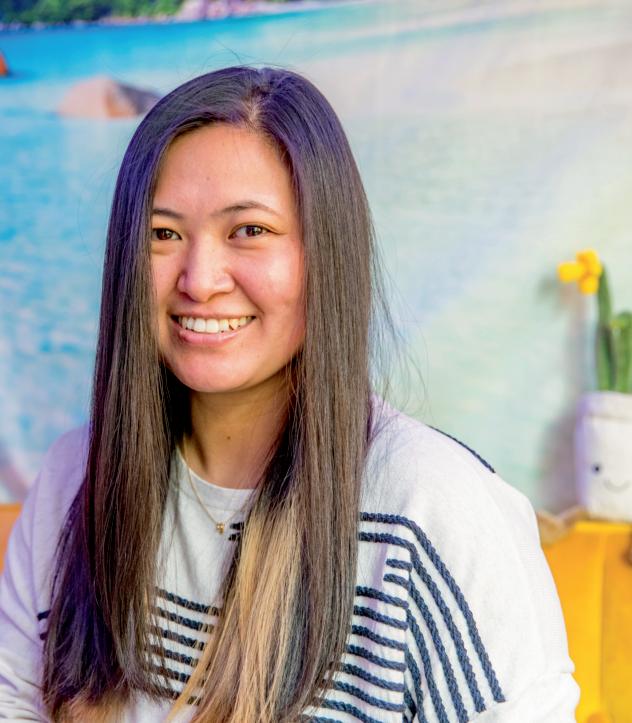
BY ANNELISE ’23
What drew you to KUA?
I arrived here as a sophomore after deciding late in the admission process that I wanted to attend independent school. When I took a tour, I completely got a sense I hadn’t gotten at any other school. It was practically a blizzard that day and there was snow all over the place and it was hard to even walk around. But I walked into a rehearsal of the musical The Producers and sat down and watched the entire process. It was the best theater of all the schools I visited, and I liked watching the laughing and enjoyment of all the students rehearsing.
How have you included the arts in your KUA experience?
I was in three of six ensembles and last year’s musical was my sixth show. I’m in the Arts Scholar program. Arts was always part of my life. At 4, I was doing the “grown-up” musicals. It’s always been a draw for me. I’ve also found a lot of other things on campus I’ve wanted to do: I’m a dorm proctor; a diversity, equity, inclusion, and justice proctor; and the president of the QueerStraight Alliance (QSA).
You’ve taken a big role with QSA. Why is this important to you?
I came from a small school where being gay and out wasn’t a thing. When I came here, I wanted to make sure people were educated and not have the close-minded experience I had found elsewhere. KUA has allowed me to speak about who I want to be and allowed me to be who I want to become. We’ve had more students come to KUA who are out and open and they know they can continue to be safe here. A couple years ago, [Assistant Head of School] Mr. Kardel gave a speech that really reflects our continuous progression in building our capacity as a school. I want to help build our capacity to connect with one another.
How do you work to build that capacity? I’ve had a lot of good conversations with people in the Young Conservatives Club. A lot of people might see the Young Conservatives Club and QSA as “enemies”
and that’s just not true. We talk about what our engagement can look like and how we can work together. I think we want to listen and understand each other’s point of view. It’s our role to be patient and educate those who may not have access to the same information and not push each other away. It only takes a couple of words. I’ve gotten more comfortable with using my voice and talking to people and that’s part of KUA’s continuous push forward. Part of my thing is connecting with people I don’t agree with. This is a mini version of what society looks like, and we’re going to have to be able to talk to each other, talk to adults.
You’ve used your voice as a student representative on Academic Council. How did it feel to have a seat at the table with administrators and department chairs? On the first day of Academic Council, I saw a different side of teachers. I knew they were listening and taking things in. I’ve always been good at speaking with adults. Being at that table boosted my voice and made me know that I could make change. Academic Council let me take what I saw as the student experience and apply it to our discussions. A teacher can see what’s going on in classrooms, but as representatives, we could share what things meant to a student in their daily lives—what people are talking about in the dorms or over lunch.
How do you hope to use these skills and experiences going forward?
I’ll be attending Occidental College in L.A. and studying theater with a focus on directing as well as art history. My goal with directing is to produce plays with a strong social purpose. I see the medium of plays as a way to communicate, protest, and have people heard. I also hope to continue my passion in having voices heard through social change groups, through class offerings such as “Comedy for Social Change.” L.A. is such an open community of people. I hope to take and learn from such a large city the ways to connect people and apply it to smaller places when I leave college. K
Annelise attends Occidental College, where she plans to pursue theater as a way to communicate and amplify voices.

“I think we want to listen and understand each other’s point of view.”

Bleyton ’25 can’t recall a day when he didn’t have a lacrosse stick in his hands. Birth, he believes, was his introduction to the game.
“That’s just how it is back home,” he says. “Everyone starts playing lacrosse at a young age.”
Home for Bleyton is the St. Regis Mohawk Reservation, or Akwesasne. Located in northern New York and southeastern Ontario, Canada, it is home to the St. Regis Mohawk Tribe. Bleyton arrived at KUA as a freshman, following in the footsteps of his father, Evan Thompson ’96, who also played ice hockey and lacrosse for the Wildcats.
Lacrosse is one of the fastest-growing sports in the United States, but with its meteoric rise it has also developed a reputation as a game for the privileged East Coast elite. However, lacrosse is rooted in Native American tradition and today Indigenous communities are trying to change the narrative by reclaiming their culture, educating the public on the sport’s origins, and competing on the world stage.
“I’m happy [our message] is spreading to different people,” says KUA teammate Joiise ‘23. “More people playing is more competition and more enjoyment.”
Last fall, Bleyton and Joiise qualified for the Brogden Cup; part of the USA Fall Classic hosted by USA Lacrosse in Maryland. Each played for development teams under the Haudenosaunee Nationals men’s team—Joiise with the U18 team and Bleyton with the U16 team—taking on the U.S. and Canadian teams. Last spring, Bleyton was also selected to play in the Heritage Cup for the U15 team.
The Haudenosaunee Nationals team, formerly the Iroquois Nationals, represents the six nations of the Haudenosaunee Confederacy: Mohawk, Oneida, Onondaga, Cayuga, Seneca, and Tuscarora. The men’s and women’s teams are seeking entrance into the International Olympic Committee to compete as a nation when lacrosse returns to the Olympics in 2028.
“We are a sovereign nation, but we don’t have our own sovereign land,” said Joiise, a member of the Seneca Nation. “We’re a separate nation, and I think about it as playing for a people, not a set of lands.”
Lacrosse holds profound significance for all the athletes playing for the Haudenosaunee teams. “It’s considered medicine and it’s good for your spirit. This is a game we play for the Creator,” Joiise explains. “Obviously, it’s a game and I do want to win, but it has a deeper meaning. You’re supposed to feel good practicing and playing it.”
Lacrosse as medicine is why Bleyton and his family gathered for a game of lacrosse after his grandmother’s death last year. “It helps everyone come together and be thankful for the time you had. It was one final game she could see.” He also points to the power of the game after an exhausting day in class. “I’ll walk up to the field, and as soon as I pick up my lacrosse stick I have so much energy and excitement.”
At KUA, Joiise and Bleyton also see the practical side of their talents. While both are excited by the idea of one day securing a spot on the men’s national team, their immediate goals are to leverage lacrosse for opportunities in college. Joiise, who graduated in May, heads to Cornell University where he hopes to pursue his dream of becoming a dermatologist.
“Bleyton and Joiise’s contributions to the team go way beyond their lacrosse skills,” says Nick Antol, KUA varsity boys lacrosse head coach. “They have been culture-changers. I assume most American youth players are aware of the sport’s history but don’t do a great job of honoring its past. Bleyton and Joiise play the game the right way; they’re passionate, tough, and remarkably unselfish. They lead by example, and our guys want to emulate that.”
As for the work of changing the lacrosse narrative, athletes such as Joiise and Bleyton still find ignorance and resistance along the way.
During a game, members of an opposing team taunted Bleyton for his long hair, a symbol of strength and power to Indigenous people. Bleyton took to social media to reflect on the experience and help others understand his heritage. “This game was a gift to my people from our creator, and our gift to the world—so we must treat it as one. Honor it. Play with good intentions, play hard, and most importantly, play with respect.” K
Interscholastic SportsTeams
From Lacrosse to Softball and everything in between.
Bleyton ’25 and Joiise ’23 qualified to play for the development teams of the Haudenosaunee Nationals.

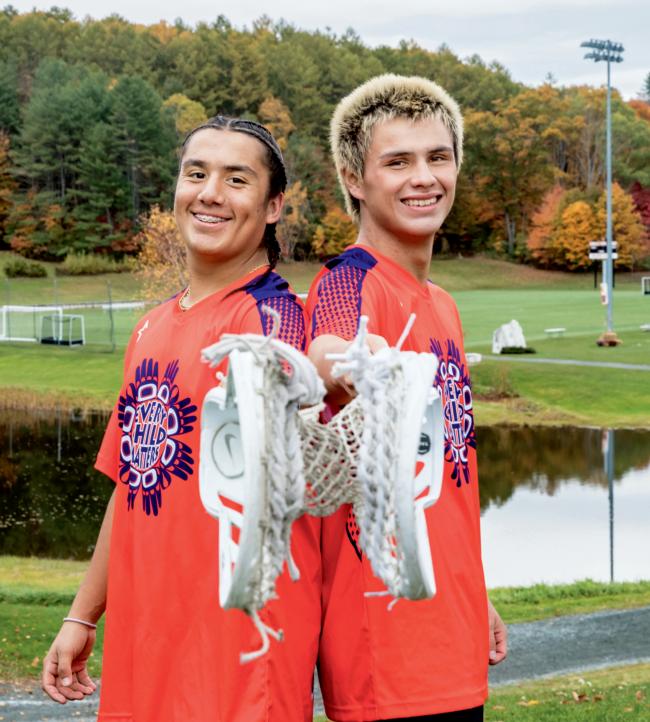
Twice a week, the entire school gathers in Flickinger Auditorium for All School Meeting. Every gathering offers a time to share, bond, laugh, educate, and master the art of public speaking.
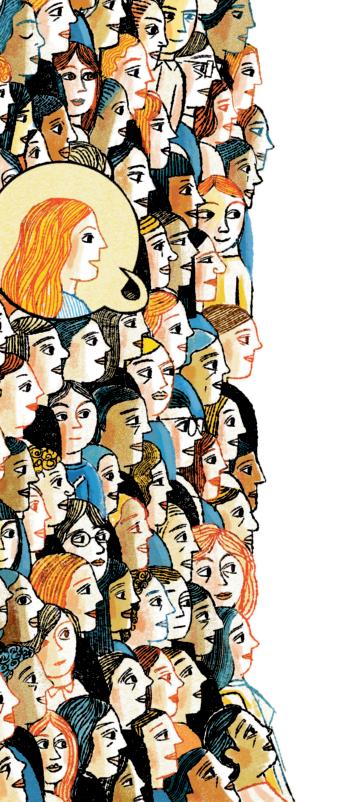
“All School Meeting is one of those rare occasions within our daily life where we as a community are all seated together. It is a fantastic time to appreciate each other’s presence.”
TAKEO ’23
Co-All School President
“I’m really excited to let you all know that the pigs arrived on campus last Saturday. The pigs are a crucial part of our KUA community here and serve a huge sustainability purpose. By having the pigs here, we save seven to 15 tons of carbon dioxide, which is enough to drive all the way around the world.”
BRYNN ’25
“Seventy-five percent of you are probably dehydrated right now. Think about how much water you’ve had today. It’s super, super important that you’re adequately hydrated, not just for sports but for life, for class, and for maintaining your focus. So, if you haven’t had any water today—and your coffee with whipped cream and caramel doesn’t count as water—make sure you get some in you.”
MATT UNDERHILL English teacher, boys varsity hockey assistant coach, varsity softball head coach
“Kindness runs so deep to the core of who we are. KUA’s been around for over 200 years, and inclusivity and embracing diversity has been at the heart of who KUA is since the very first day we were founded. Extending our kindness to others is the key that unlocks that.”
TYLER LEWIS Head of School
“This upcoming Monday we will be climbing Whaleback Mountain as a whole school. We do this as a community to connect with our classmates and peers, to enjoy nature, to experience new things out of our comfort zone, and to spend the day learning outside of the classroom. And most importantly, to have fun. Mountain Day is a tradition here on The Hilltop and we value the beauty of nature that the Upper Valley provides for us.” —LULU ’24
“As you may have seen, there are some flowers outside the rink and this was to show KUA’s support at the Alzheimer’s Walk, where we had 28 students come out and participate. We also set a modest goal of raising $300, but as of yesterday, we had raised $2,200. We are incredibly thankful to all those who supported.”
AINSLEY ’24 & EVA ’24
“Going into this year, I believe that our ninth-grade class is resilient and lays a great foundation. I’m excited for this year, where we can all grow together, and I’m always here if you want to talk. You can usually find me at the bagel station.”
MO ’23
Co-All School President
“What does ‘belonging’ mean? That’s kind of too big of a question for me to answer, but one thing I do know is what the ground of belonging is, what the very foundation of that is, and it’s three things: kindness, respect, and compassion. Those are the ground rules here at KUA. We treat each other with kindness, respect, and compassion.”
TOM KARDEL Assistant Head of School
“This past July, I engaged in a two-week long program at Oxford University in England as my Cullman Scholarship. I selected psychology and AI studies as my major and molecular medicine as my minor. This program has fueled my curiosity to explore and continue learning. I would like to thank the Cullman family for providing me this experience.”
RYAN ’23

I love being a high school teacher. I considered getting a Ph.D. and going the college professor route, but in the end, I found students to be far more interesting than any academic discipline. On the KUA website I’m listed as a French teacher, but this goes way beyond French. I don’t just teach Voltaire; I teach students.
For a long time, my goal was to be the best language teacher ever. I watched master teachers at work (John Rassias at Dartmouth, Tom Kardel at KUA, to name a few), I went to conferences, and I read everything I could get my hands on. That goal served me well, but lately I’ve found myself drifting in a different direction; sometimes you need to think beyond your goal to see where you’re really headed. Being the best is not the point. The point is to keep learning. Actually, the point is that our students fall so in love with learning that they won’t ever stop. I want to model that.
I love teaching because there’s always more to learn and I get to help others. Job one is to create a safe, supportive learning environment. Job two is to balance rigor with creativity and boisterous fun. Every summer, I look back at the school year to see what sparked students’ joy and what drew blank stares, and I try to eliminate the latter for the coming year. I don’t use textbooks because you can’t prune a textbook. I also choose which of my colleagues’ best ideas I plan on stealing. In September, I dust myself off and try again: new year, new tree ring.
In the fall, I always invite my advisees to share their academic goals. Without fail, they say, “Get straight A’s.” This makes sense. We’re a college preparatory school, after all, and good grades are the keys to the kingdom. Striving to get top grades is a sound strategy if your goal is to get into a top college. Let’s pause that thought. Is it possible that the “good grades/best college” goal might be limiting? I think so, although it’s hard to see it from high school. If you matriculate at the college of your dreams, are you done? Say you graduate from college summa cum laude. Mission accomplished? Of course not. You’re just getting started. I speak from experience. Like my advisees, my goal in high
Finding purpose in helping students fall in love with learning.
school was to get the best grades and attend the best college. From that perspective, I succeeded: I attended an Ivy League college, spent two years teaching at an independent high school, went to law school, and took a job at one of the top law firms in Boston. There I was, on top of the mountain—or so I thought. If I’m being honest, I think my goal was more about getting up there than anything else.
Then a funny thing happened: That old teaching voice started whispering in my ear. I volunteered to help with a high school trial advocacy program in Boston public schools. I coached a youth soccer team in my town. My mountaintop had a great view, but the whispers persisted: There had to be more. It turns out there was. I was one of the lucky ones; I found a way to look past my goal of being the best to see what my real purpose was—helping students fall so in love with learning that it informs the rest of their lives. To be sure, I want my students to love French, but I want them to love learning even more.
Since I’m writing this in late May, I can imagine the eye rolls from my current students. With the weather warming and the trees blossoming, I think their love of summer might outweigh their love of learning right now. But it’s my goal and I stand by it. A wise colleague, English teacher and Coach Matt Underhill, told me the other day, “As coaches, it’s more important to instill a love of the game in our athletes than to teach them specific skills.” Amen.
At KUA, our mission is to “create a deep sense of belonging for every member of our community. Through intentionally designed experiences and challenges, our students develop the knowledge, voice, and character to live with purpose and integrity.”
Finding your purpose is a deeply personal endeavor. No one can find it for you. It may land in your lap; it may require years of searching; it may become your avocation or your vocation. But if you can find your way back to yourself, your true self, it will allow you to live with passion, gusto, and wonder.
And that, my friends, is the whole point. K
A snapshot of what Kimball Union students are studying
Students engage in the design of new living spaces.
When Kimball Union decided to move forward on a new project to renovate two residential halls and construct three faculty homes, the team immediately knew they wanted the multi-year project to serve as an educational resource for faculty and students. Faculty have already found ways to engage students in topics like sustainable building and geothermal energy.
Early in the process, students in STEM Director Ryan McKeon’s “Design Thinking” courses tackled four open design topics related to the new living spaces: dorm-room features, bathrooms, gear storage, and outdoor space. The teams used design thinking, which brings a human-centered approach to creative problem solving, to survey students on how they think, feel, and behave in relation to their living spaces.
“They are going to take this experience out into the world, and it will be exponential.”
“What makes this project interesting is that students will be able to come back and see the immediate effects of their work in different aspects of this dorm,” says McKeon. “This was the perfect application of the design-thinking process because some of these very students will likely occupy this dorm when it’s finished.”
The project’s architect, Andrea Murray ’87 of Vermont Integrated Architecture, joined the groups’ final presentations, which delved into quality-of-life topics that felt relevant to residents. They examined everything from desk preferences to how and where to recycle, from how New Hampshire humidity impacts flooring to whether they view free time as “chill” or “active.”
“It’s eye-opening and funny to hear the thoughts of what needs to happen through the students’ lens,” says Murray. “They are going to take this experience out into the world, and it will be exponential.” K

Environmental students use tree plots to understand ecological succession.
In his first year of teaching at KUA in 2010, Blaine Kopp staked out a 10-by-10-meter plot perched high on the Potato Patch. Each year since, he has climbed this campus hill adjacent to the lower playing fields to section off another plot of ground. In various plots, white pine, aspen, and birch trees of various sizes and ages shoot from the ground. The Louis Munro Chair of Environmental Science is repeatedly asked the same question about his plots: Who planted the trees? And therein lies the point of his work. No one planted the trees.
Students in Kopp’s AP environmental science classes use these spaces to study ecological succession—the idea that when new resources, habitats, and space become available, early colonizers come in and occupy the landscape. The plots demonstrate secondary succession, which occurs as nature reclaims land that was once altered by humans. In one visit to the succession plots, students are able to evaluate the types of changes in land across one, two, or more years. The first few years show subtle differences, but changes in canopy height are easy to spot between the oldest and youngest plots.
“We go out and learn the basic five types of vegetation, then we’ll go back and start to generate some hypotheses about the types of change that they think they’re seeing,” says Kopp. “Students design a sampling strategy that will allow them to test a hypothesis, so they need to measure data, then write with confidence and statistical significance whether what they predicted was supported by that data.”
In addition to applying science, students develop a new relationship with The Hilltop, recognizing more scientific details about the landscape in which they live and speaking with a broadened understanding of ecological succession as a result. K

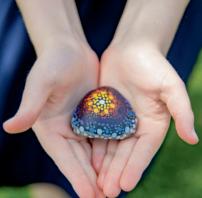

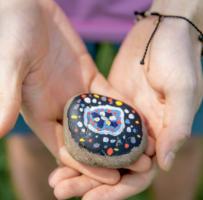
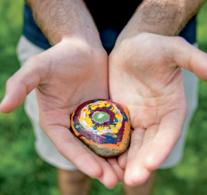
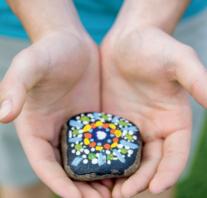


In a unit on Buddhism, students paint mandala stones in a search for meaning.
If you look closely as you meander through campus, you will discover beautiful and smooth, hand-painted stones tucked at the edges of paths, near the steps of buildings, or sometimes in the most unexpected nooks and crannies of inside spaces. Each fall, students in the humanities course, “The Search for Meaning,” paint these mandala stones during a unit on Buddhism. When Tibetan Buddhist monks complete sand mandalas, an essential final step is to wipe the sand away and destroy the creation, putting the emphasis on the journey rather than the final product. Throughout the year, the mandala stones rest on the classroom windowsill, witness to the class’s journey. When the year ends, students each choose a sacred place to leave their stone where weather and time naturally test their permanence.
“I will be putting my stone by the stairs next to the hockey rink. My best and worst memories have mostly happened there. The beauty of a great win or grand loss are what make it so special.”
—DANIEL ’23
New approach optimizes the science of learning and community.
Drawing on decades of personal insight into teenagers—and prompted by the various issues impacting them in ways previous generations never imagined—Kimball Union Academy took a deep dive into the abundance of research on strategies that support teachers and students across their professional or educational careers.
The result is KUA Design, the Academy’s approach to learning. By implementing research-informed teaching and learning strategies into the curriculum and faculty professional development, KUA can now best deliver an experience that will support students in their educational, social, and emotional lives.
“Our goal is to unlock joy and develop a sense of agency so students can discover a love of learning in their life experiences at KUA and beyond,” says Head of School Tyler Lewis.
Based on the foundation of positive relationships, KUA Design leverages the science of how the brain works and learns to create intentionally designed experiences and challenges so all students feel motivated, engaged, and supported. The approach guides every aspect of student life—how they find academic success, navigate social experiences, and work as a team
Informed by the principles of KUA Design, Jenny Blue gives “memory checks” to ninth-graders rather than reading quizzes.
on the playing fields. “At the heart of KUA Design is a respect for the neuroplasticity of the brain—especially the teenage brain—and our deep-seated human need for belonging,” says Anne Peterson, director of studies and academic support.
Peterson, who oversees KUA’s Gosselin Center for Teaching and Learning, convened a group of teachers in the summer of 2022 to examine the research and create a framework for KUA Design. Faculty are now using that framework to help students optimize their learning, achievement, and sense of community. Additionally, faculty members have been participating in professional development through St. Andrew’s Center for Transformative Teaching and Learning to understand how to put these research-informed teaching and learning strategies into practice.
“With KUA Design, we are well-positioned to meet the needs of today’s students,” says Lewis. “Building on a long tradition of knowing our students and refining exceptional instincts and practices, we have also forged a leadership position in the understanding and implementation of the science of teaching and learning. It’s a difference you can feel in everything we do.” K

“We took joy in the messy act of remembering—not necessarily in the accuracy.”
—JENNY BLUE P’24, ’26
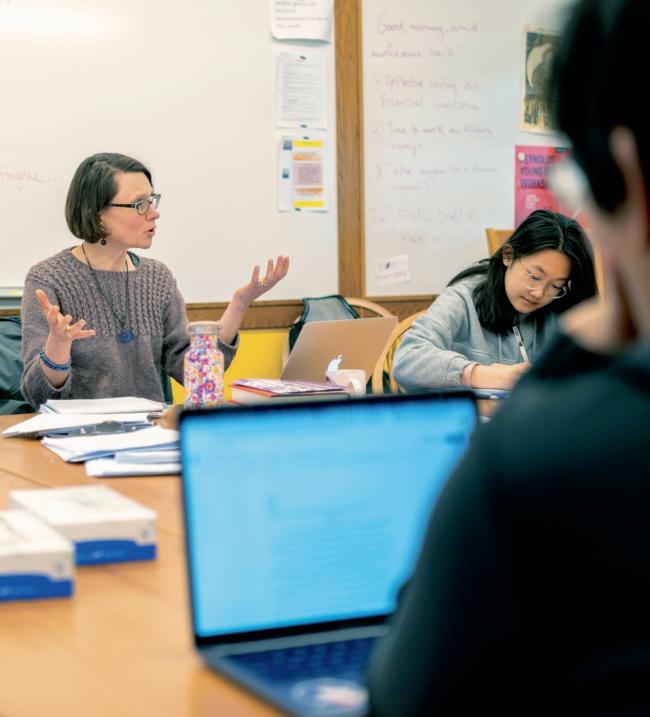
“We want our students to not just know what to do, but also why it will help them.”
—COACH TUCKER PRUDDEN
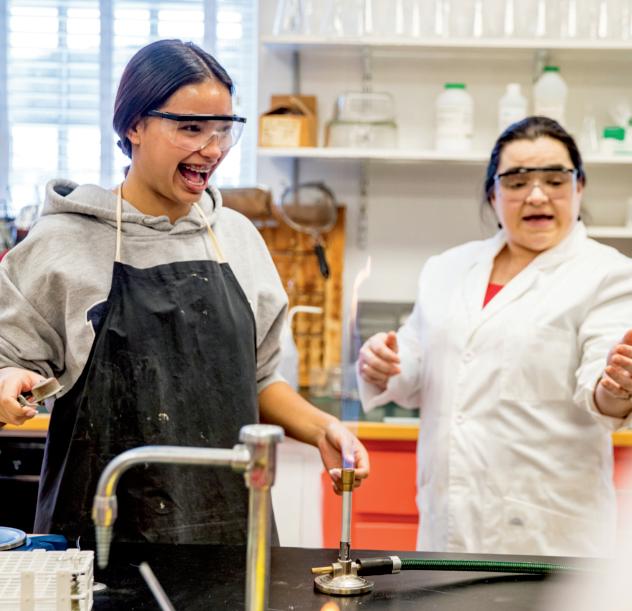
KUA’s three Scholar Programs prepare students for lives of leadership in areas of critical importance to our world. Working closely with KUA faculty, students explore a passion or interest through a two-year course of study. Each program combines coursework, community service, and experiential learning that culminates in a Senior Capstone project.
Students don’t need to pursue a future major or career in their program area to benefit from a Scholar Program experience. They graduate with problemsolving skills, creativity, critical thinking, and initiative—essential skills for college and the future of work. Students may apply to a Scholar Program in the spring of their sophomore year, and new juniors may apply at the start of their first year.
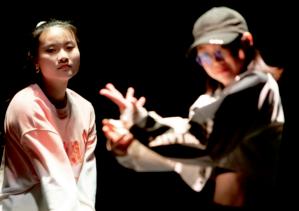
“It doesn’t matter that I didn’t become an art major. The seminars helped me develop an artistic eye from every corner of life, and the senior capstone nurtured my creative mind to combine different disciplines of art to send my message to the outside world.”
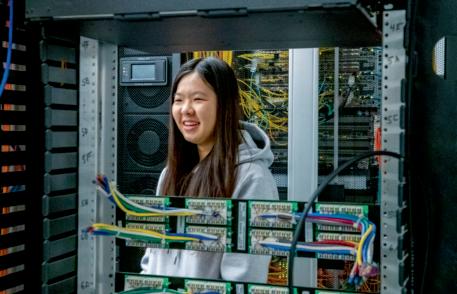
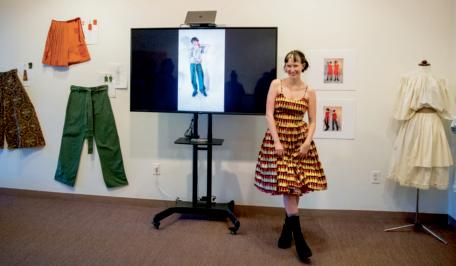
In an increasingly globalized world, you can become an active citizen of our global community through the Global Scholar Program. You’ll develop an understanding of the economic, political, cultural, and social issues facing our world.
The program is structured in three key areas: academic, experiential, and application. Students admitted into the program maintain a rigorous academic course load with an emphasis on courses international in nature. Instruction in language will round out your academic experience.
Coursework is brought to life through travel, experiences, and immersion in our global society. Scholars benefit from KUA’s participation in the Global Alliance for Innovative Learning, which offers exchanges and conferences for students in eight countries. Through active participation in events on and off campus, Global Scholars develop communication skills and present their findings through a culminating Senior Capstone project.
Do you enjoy learning through the creation and exploration of art? As an Arts Scholar, you’ll navigate a unique path that will enrich your education and give you the tools and creative voice to ask difficult questions and solve complex problems. Through coursework, special arts seminars, and independent study, the Arts Scholar Program develops curious learners who engage the world with fresh and original perspectives.
The Art Scholar Program is structured to ground students in five areas: theory of art, creation/ experience, community service, leadership, and appreciation. Arts Scholars present their work through a culminating Senior Capstone project.
If you’re interested in science, technology, engineering, and math (STEM), you can tackle real-world challenges through the STEM Scholar Program. The program is structured in three key areas: academic, experiential, and application. Traditional coursework is paired with academic exploration through research and lab work. You’ll also participate in substantive fieldwork through internships and research programs, an honors course in design thinking, as well as STEM-related lectures and events, that all culminate in a Senior Capstone project.
Last summer, as many high school students were relaxing and shaking off the stress of the school year, Ariatnny ’23 threw herself into the center of a chaotic maternity hospital in the Dominican Republic. As a Cullman Scholar, she shadowed doctors; witnessed births, c-sections, and hysterectomies; and observed the harsh reality of obtaining quality healthcare in the country where she was born.
The Lawrence, Mass., native returned home confident in two things: She would look to pursue a career in medicine or healthcare, and her experience would inform her capstone project for the Arts Scholar Program during her senior year at Kimball Union.
The Cullman Scholarship Program supports students in off-campus study programs as an opportunity to explore their academic interests in an area of their choosing. “I was very in love with my Cullman experience, and I wanted that to come across in my capstone,” says Ariatnny.
Her early capstone idea—to create figurines that express fertility, female productive rights, and empowerment—would demonstrate her talent in ceramics, which she discovered and cultivated during her four years at KUA under the direction of teacher Ursula Fries-Herfort P’14, ’17. Ariatnny’s proposal was inspired by ancient, prehistoric figures such as Venus of Willendorf, a statuette of a woman believed to have been carved nearly 30,000 years ago. She hoped to address the evolution of beauty standards.
With time and reflection, however, her capstone evolved to include all types of beauty. “I wanted to represent women, but also everyone in society, and my project changed to include masculinity and people in the middle of both genders,” Ariatnny says. “Each figure represents something different to me, but they are open to interpretation and the perspective of the viewer.”
One figure is an older woman surrounded by vines, evocative of Mother Nature. One figure represents growth and learning, while another expresses the pressure on young girls to cover their bodies. Fragile masculinity is represented through spikes protruding through the body of a male figure, while a smaller piece suffers from scratches and scars.
The bodies were wheel thrown, then molded and shaped. Ariatnny added decorations and surface designs by hand before finishing them with a wash in cool tones of blues and greens.
“It’s a discovery process for me,” she says of her work in ceramics. “I never would have thought during my freshman year I’d be able to do this, but I really enjoyed the process. It’s very therapeutic.”
With her capstone and graduation behind her, Ariatnny is looking ahead to attending Brandeis University, where she hopes to continue chasing all the passions that came to life during her time on The Hilltop. “I see medicine as a career and my future,” she says. “My Cullman was such a pleasant experience. Being in the hospital made me realize that this is really for me.”

“It’s a discovery process for me. I never would have thought during my freshman year I’d be able to do this, but I really enjoyed the process. It’s very therapeutic.”
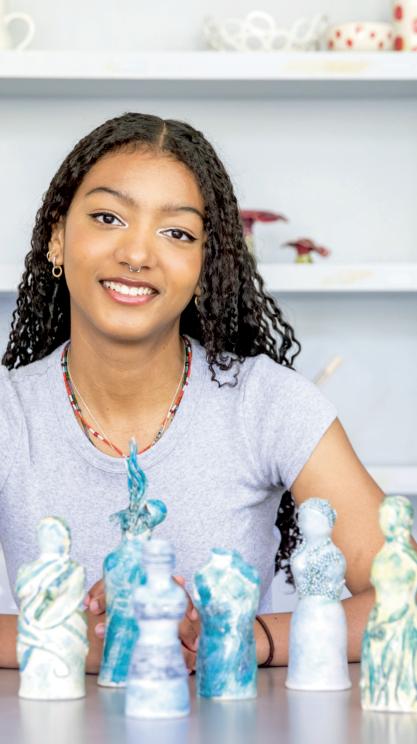

Created in 1983 by Hugh Cullman ’42, the Cullman Scholarship Program supports students in off-campus study opportunities. Here’s a recent sampling of Cullman Scholars and the projects and coursework they chose to pursue.
Helena: Studying with the Rocky Mountain Biological Lab at the Western Colorado Conservation Corp










Libby: Studying neuroscience at Harvard Summer School, researching epilepsy at Korle-Bu Hospital in Ghana
Yohan: Studying Community, Leadership, and Politics at George Washington University and volunteering at the Public Policy Office of Korean Congress in Seoul
Sophie: Working with Grassroots Soccer to combat HIV in South Africa
Annabelle: Studying art history through the Florence University of Art in Florence, Italy
Aidan: Bird watching, nature photography, and climate studies in Arizona
Wenshi: Studying at The Ross Program’s Advanced Mathematics Institute at Ohio Dominican University in Columbus, OH
Anna: Attending the Young Writer’s Workshop at Bard College in Great Barrington, MA
Ryan: Studying Molecular Medicine, Psychology and Artificial Intelligence at Oxford University, Oxford, England
The Hilltop is thriving throughout the week as well as on weekends with students fully engaged in academic and extracurricular life. Our student-centered approach means that students determine what they are passionate about, how they’d like to grow, and the ways in which they want to invest their time.



STEM Activity is open to all students to explore science, technology, engineering, and mathematics through experiential projects. As a team, students work together to solve a problem or answer a question related to STEM by using the scientific method or engineering processes. Projects are guided by the interests of the instructors and students, with some examples including developing an IoT network, designing and building an underwater ROV, exploring biotechnology, and making use of the KUA campus for environmental research.
The Kimball Union Fire Brigade is the only program of its kind in the United States. It is comprised of students and two faculty advisors who serve as active members of the Plainfield Volunteer Fire Department. Throughout the year, students undergo extensive firefighting training to respond to emergency fire and rescue calls.


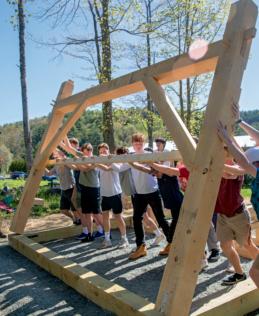
The KUA Farm Team practices sustainable agriculture on campus. Students raise hogs and chickens, construct animal housing, tend a hydroponics greenhouse, and raise seasonal field crops. The Pork Project is our flagship program. Food waste from the dining hall is fed to pigs, offsetting up to 15 tons of CO2 emissions annually and generating a positive cash flow for the club. Farm Team data are incorporated into the science curriculum, and the team’s work helps raise community awareness about sustainable food production.


The KUA Outing Club is an afternoon activity that creates opportunities for students to explore and enjoy the outdoors through onand off-campus adventures at all levels. Canoeing on the Connecticut River, overnight trips, hikes, and backyard explorations are a few of the many events the club undertakes each year.
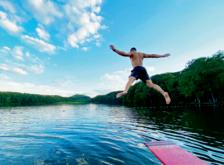
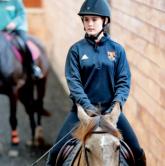
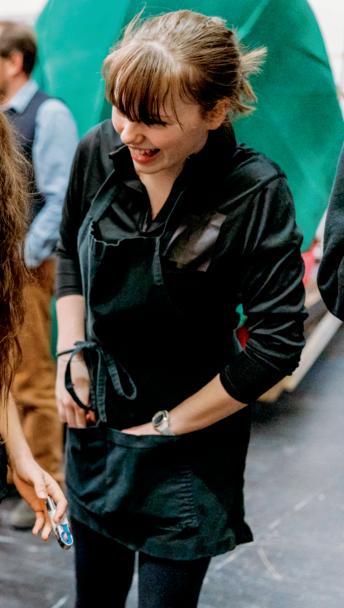


Students participating in the Winter Musical
Our visual arts program offers a rich selection of both trimester and yearlong visual art courses and a vibrant afterschool program. Learning from teachers who are also working artists, you will explore a variety of media as you learn the important technical skills of the different disciplines. Our hands-on studio classes will help you find and develop the creative voice that will give expression to your ideas, feelings, and experiences.

Performers of all abilities are encouraged to participate. Our unique Ensemble Period is a dedicated “sacred space” in the daily schedule free of conflict with other school activities that guarantees all students full access to music and dance ensembles.

2,200
Dollars raised by students participating in the local Alzheimer’s Walk through Penny Fellowship Service Club and Neuroscience Club
KUA provides excellent athletic facilities for the entire community. Nestled in the heart of the Upper Valley, our campus is the ideal training and recreation center for athletes of nearly any discipline and at all levels.

Sometimes it was more common to find Aidan ’22 on two wheels than on two feet. Slowly pedaling through the quad in late afternoon, Aidan returns from the campus trails where he and his teammates spent an afternoon on the single track—enjoying fresh air, the camaraderie of friends, and learning skills that will stay with them for a lifetime.
Today, 30 student-athletes are finding their place on the mountain biking team and in the forests that surround campus. They are in good company among people of all ages who have found mountain biking a counterbalance to hectic, screen-driven lifestyles.
Although mountain biking saw growth during the past decade, COVID-19 drove a meteoric rise in past years. Market researchers reported sales of front-suspension mountain bikes were up by more than 150 percent in 2020. Located near world-class riding in New Hampshire and Vermont and a place where the sport already had a foothold, KUA finds itself in the right location at the right time.
The team is coached by faculty members Bryant Harris ‘04 and Noah Lynd. Harris was drawn to the sport as a KUA student through his advisor and former faculty member Mike Cloutman, who built the initial program. Today Harris advances Cloutman’s efforts while building a culture that promotes healthy, active participation over cutthroat competition. As a result, the team doubled in size in the past two years.
The team travels regionally for Lakes Region races and competes well, but it’s the time spent in the saddle on KUA’s trails that appears to have the biggest impact on student-athletes.
“We’re not always super race-orient-
ed like some other schools,” says Aidan. “They’re very focused on placing well in races. Here, we do so much more than that. We’re encouraged to race but we also really try to maintain health and have fun and make this an environment that’s friendly for all. I like the thrill of the jumps, I get exercise, I build a lot of confidence, and I love my teammates.”
“A lot of kids are not in it for the racing, but they do the racing because it’s such a positive environment,” says Harris. “And this is true for everyone participating in the races. They encourage the last-place person as much as the first-place person.”
The sport, he says, is different from others because it’s not a college sport. “For our top riders, they might get to compete as an adult or gain small sponsorships. It’s a lifelong sport, and they’re learning things with the intention that they can use this for the next 50 years.”
For now, the student-athletes are fortunate to have everything they need in their backyard. Harris utilizes the campus as much as possible so students can enjoy it in their free time. In the past couple of years, KUA has doubled the trail network at the campus-owned French’s Ledges and added nearly seven miles of single track above the Potato Patch. Harris also weaves in lessons from his U.S. history class so students can better understand the land they ride—the growth of forests, the stone walls, the abandoned root cellars. He’s built partnerships with local bike shops and invites parents and alumni to tag along on rides.
“These kids are all representing the school and they’re all wearing their orange,” says Harris. “I tell them to just go out and ride as hard as they can and have fun.” K

Students earning at least one varsity letter each year 70%
’23 joins
from

Mountain biking team finds camaraderie on the trail.




Your guide to 11 unique spots on and off campus that make the KUA experience special.



An extensive network, including the campus “Potato Patch,” offers maintained and groomed trails on approximately 50 acres suitable for biking, Nordic skiing, running, and walking. The trails are used by KUA’s mountain biking and cross-country teams and connect directly to the main Pope Fields athletic complex.

Students find themselves in this body of water every season of the year, whether they’re paddling across in a canoe race during our inter-class Tower Cup competition, playing pond hockey during Winter Carnival, piloting a watercraft they built themself in STEM Activity, or taking the polar plunge to raise money for charity.


Flickinger Arts Center
“Flick,” as it’s known around campus, is an expansive facility for both the visual and performing arts. Painting, jewelry, ceramics, dance, music, and even a recording studio are available for artists of all levels. The theater stages both a fall play and winter musical each year, and every member of the community joins together in Flick twice a week for All-School Meeting.
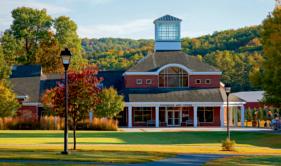

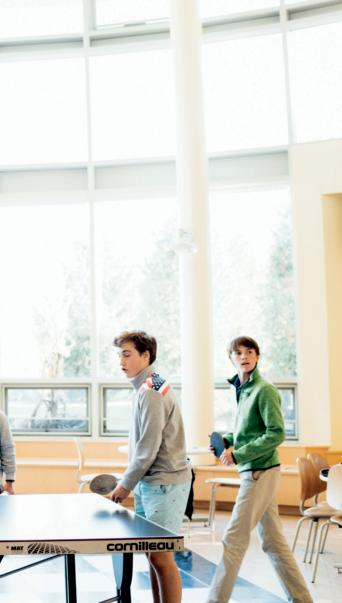
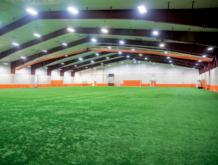
The Stu KUA’s Barrette Campus Center, or the “Stu,” is at the crossroads of campus life. The mail center, lounge, student life faculty offices, and school store are available throughout the day as well as comfy areas to sit and study, read, or play games and catch up with friends. Fierce table tennis and chess games are known to go down on any given day.

Dartmouth is just 12 miles from campus in nearby Hanover. KUA faculty take advantage of access to Dartmouth resources for educational, cultural, and athletic opportunities for students.

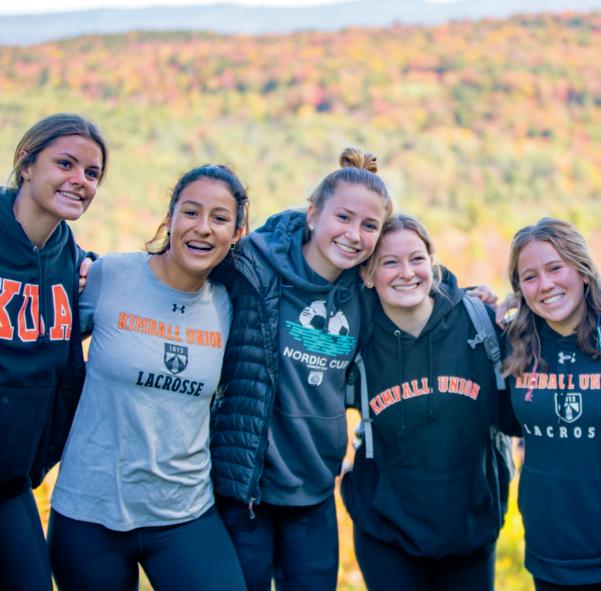

Reading Room
This quiet spot in the Schafer Family Library is a favorite among students for studying, reading…and occasionally napping. The sun-drenched room offers a scenic mountain view and looks out over the KUA Farm where you can often catch a glimpse of grazing sheep.
Meriden Bird Sanctuary
The club was founded in December 1910 to advocate for bird protection in response to wasteful exploitation of birds for years for food, by egg collectors, and especially by a large feather trim industry for clothing and hats. In 1911 the club became the first in the nation to own and maintain a sanctuary for birds. The 32-acre sanctuary sits adjacent to campus and offers several paths for walking through towering pines.
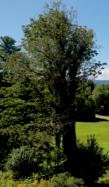

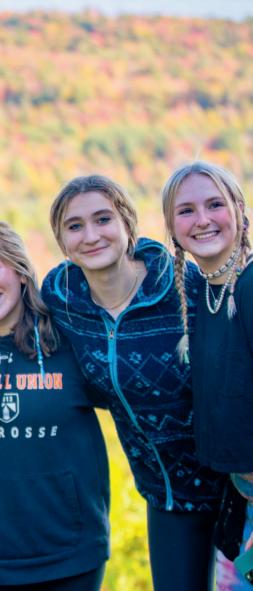
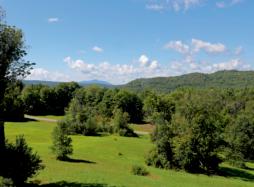
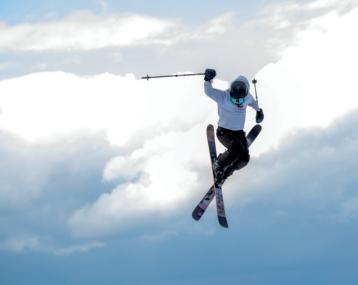
This small, locally owned mountain has been a treasured spot for KUA skiers. Each fall, the school pauses from campus life to hike the hill and enjoy a barbecue and games during Mountain Day, a tradition that dates to the 1900s. Whaleback also hosts the ninth-grade ski day, which gets everyone out on skis – expert and first timers alike.
Located in the heart of Northern New England, Meriden is within 15 minutes of two local ski hills. Our Alpine and Freeski teams travel to nearby Mount Sunapee and Okemo for training and competition. We also have easy access to Killington, Pico, and Saskadena Six for recreational skiing and snowboarding all winter long.

At the center of Meriden lies French’s Ledges, a small, rocky summit that offers spectacular 360-degree views from Mount Ascutney to the southwest, most of the Green Mountain ridge, the White Mountains, and the Meriden Valley. KUA land below the Ledges also has a rock outcrop campsite with excellent views to the west.
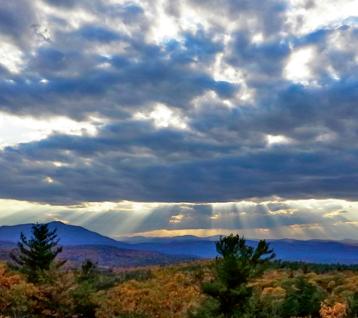

“Two of the biggest things I took away from doing theater at KUA were speed and confidence.”
’15
When Chase McGough ’15 is behind the scenes at a major awards show, it’s in a very literal way. In March 2022, McGough was working as a technical designer with Hudson Scenic Studios in Yonkers, New York, when he was tasked with creating the stage design for the biggest night in cinema–the Oscars.
“We received the initial drawings and started working the same day our bid was approved, which is abnormal,” he explains. “Usually there’s more lead time and I’m collaborating with other designers, but in this case, we started immediately because there were so many design constraints.”
The first challenge was time; size and weight presented additional challenges. The 94th Academy Awards set was designed and built in New York, but the 70-by-40-foot set need to be broken down into pieces and shipped to Hollywood’s Dolby Theater for assembly. Furthermore, the components needed to be light enough to hang from line sets at the event facility. McGough designed a fanned set of fins that mimicked a loose spiral and used the lightest materials on the market to ensure the build went smoothly.
“Two of the biggest things I took away from doing theater at KUA were speed and confidence in what I was doing,” says McGough, who went on to study at Ithaca College. “Anyone can learn to do what I do, but to do it at this speed is a totally different
story. I knew how to cut lumber and nail things together, but it takes thousands of hours to master a craft and build confidence. One of the most valuable things about KUA theater was putting in those hours. Without that, I probably would have ended up working in IT.”
He fondly recalls working on KUA’s dance concerts alongside dance teacher Kay McCabe. The freedom he enjoyed while producing events with the dance program empowered him to learn more about programming lighting. This experience afforded him a broader understanding of how to translate the artistic visions of clients into plans that are feasible to build onstage. This is the backbone of his work to this day.
“You learn that the number of fingers in the pie grows exponentially when you’re doing commercial work,” he says. “Producers, owners, builders, designers, and the accountant all speak a different language, but they all need to be happy. Meanwhile, you’re still trying to create something viable.”
With the Oscars wrapped for this year, McGough is now tackling technical designs for Trading Places: The Musical, as well as several projects for Broadway, Disney, and Universal Studios. No matter the project, his ability to align numerous moving pieces ensures every project has a satisfying ending. K

“The patients we help are able to focus on getting better rather than on the expense of treatment.”
Treatment plans for cancer are so frequently adjusted that more than 40 percent of patients will have unfinished prescriptions during or following treatment, creating nearly $5.9 billion in wasted medication. Eliza Sternlicht ’18 learned about this volume of waste occurring in cancer care and knew she had to address the issue.
As a student at Brown University, Sternlicht and classmate Jack Schaeffer founded MediCircle, a drug redistribution company that connects cancer patients with unused medications. Today she serves as the company’s chief operating officer.
“We collect medications directly from patients whose treatment plans were adjusted due to things such as adverse reactions or disease progression, then recertify those medications using our three-step patented process,” she explains. “We then redistribute the medications to patients who wouldn’t otherwise be able to afford it for a flat dispensing fee of $20.”
This is hardly Sternlicht’s first effort to create equity in medicine. As a student at Kimball Union, she used the school’s 3-D printers to produce prosthetic hands for children.
“Prosthetics can cost thousands, and because children grow quickly that means they often are forced to go without limbs because they would have to replace them so frequently,” Sternlicht recalls. “It baffled me how something as indispensable as a limb could be something people can’t access. KUA was a huge supporter in helping me have the resources and funding to pursue that project, and that’s how I became interested in biomedical engineering.
MediCircle took shape during Sternlicht’s sophomore year as a biomedical engineering student at Brown; she surveyed numerous healthcare facilities about their practices and found that wasted medication is a pervasive problem. She began drafting and patenting a medication-recertification process.
Recertification has been legalized in 41 states, including Texas, where MediCircle is based and where Sternlicht was involved in amending regulations through the Texas State Board of Pharmacy to allow the process. Additionally, Texas has the highest rates of uninsured people in the nation, according to U.S. census data. “By starting in Texas, we’re able to maximize how many people we can help within a single state before we start expanding,” she says.
“About 63 percent of cancer patients I spoke with reported cost as a barrier to care,” Sternlicht adds. “Some of the medications we distribute have an average retail price of $10,000 to $15,000. The patients we help are able to focus on getting better rather than on the expense of treatment, and when I hear their stories, it inspires me to put in long hours and make it happen.” K


